#european - west asian origin
Note
There's been a lot of talk over the years about whether Ferengi are a antisemitic stereotyoe. Given that DS9 had more Jewish actors and creative staff, what do you think of that discourse?
Was this something that was kept in mind when reinventing the Ferengi from how they were in TNG?
I can tell you the INTENTION of the Ferengi was to satirize capitalism and the West. Ferengi derives from the Persian "Farangi," i.e. Franks, people from France. More broadly, it came to mean "Western European." Hence "Farangistan" = Europe. Farang/i spread to other languages, notably Thai where it now means "foreigner."
Farang - Wikipedia
So, the Ferengi are intended to be us. Westerners, even more specifically Americans. The original TNG bible compares them to 18th and 19th century Yankee traders. Sexist and greedy, patriarchal and dishonest.
I'm pretty sure this was the intention of their look too, especially the noses. Big noses are common in Asian caricatures of Westerners. Check out the Thai sculpture in the link above. According to my father, for example, the Rhade tribe from the Vietnamese Highlands called Americans "big noses" and when he was their military advisor, he was Captain Big Nose.
And then TNG cast a ton of Jewish actors as early Ferengi, and a lot of people saw them completely differently. (Aside, I've heard from some Asian fans that they perceive Ferengi as caricatures of the Cantonese, which speaks to how different cultures see them.)
We were definitely aware of this issue when DS9 came along, and I largely followed the lead of our Jewish-American showrunners on how to handle it. Generally, by digging deep into three different main Ferengi characters and several recurring, I hope we transcended the stereotypes.
We showed Ferengi not as whip-wielding pirate/raiders (not a Jewish trope btw, see Yankee traders), but as a small business owner, a handyman/engineer, and an aspiring Starfleet officer, all struggling with issues of cultural assimilation and grappling with their own culture's shortcomings when it comes to women and greed.
When writing the Ferengi, I drew from my own (white bread, Catholic, Army brat) background, so for example, I saw the Rules of Acquisition not as some kind of take on the Talmud, but as a satire of Western self-help business books, a kind of "How to Win Friends and Influence People," meets "The Devil's Dictionary." The Ferengi afterlife is based on my vague understanding of Chinese traditions I grew up around in San Francisco, etc.
I'm not sure we fully separated the Ferengi from the baggage they came to us with, but we definitely tried.
#star trek deep space nine#star trek ds9#star trek deep space 9#deep space nine#ds9#deep space 9#star trek#ferengi#ask me anything#ask me stuff#tvwriting#tv writing
3K notes
·
View notes
Text
Is BL Being Overly Influenced by Modern Western Romance Tropes?
Short answer: No. anyways, in the following essay I will explain that James Cameron is a weeb...
(okay fine~~ lets actually do this)
TLDR: discussing what media globalization is, how fandom can distill it down to only American/European cinema, showcasing how a lot of current BL is influenced by countries within it's own proximity and NOT "the west" but each other, also James Cameron is still a weeb
I had seen a post that basically proposited that BL was being influenced by modern western romance tropes and had used things like omegaverse and mafia settings as an example. I found this, in a word, fucking annoying (oh, two words I guess) because it's micro-xenophobic to me.
It positions western - and really what we mean by this is American/European countries, we're not talking about South American countries are we? - cinema as the central breadbasket of all cinema in and of itself. Inherently, all following cinema must be in some way, shape, or form, influenced by American/European standards, and as such America/European countries are directly responsible for cinema everywhere else, and these places - namely non-white countries - do not influence each other, nor have their own histories in regards to storytelling or cinema and do not, in turn, also influence American/European film making either.
Now like, do I think all of that~~ is intentionally malicious thinking on behalf of folks in fandom? No, so chill out.
I do, however, think a lot of it is birthed from simple ignorance and growing up in an environment where ~The West~ is propagated to be central, individual, and exceptional as opposed to the monolith of "Asia" - by which we mean China, Korea, Japan don't we? How often in discussions of Asian countries is Iran, India, or Saudi Arabia brought up even tho they are all Asian countries? - or the monolith that is South America - in which some folks might believe regions like the Caribbean and/or Central America belong to, but nope there both North America.
Anyway, what we're talking about here is the concept of "media globalization":
"The production, distribution, and consumption of media products on a global scale, facilitating the exchange and diffusion of ideas cross-culturally." (source)
"The media industry is, in many ways, perfect for globalization, or the spread of global trade without regard for traditional political borders. [...] the low marginal costs of media mean that reaching a wider market creates much larger profit margins for media companies. [...] Media is largely a cultural product, and the transfer of such a product is likely to have an influence on the recipient’s culture." (source)
Typically when I see fandom discussing what falls under MG the topic is usually focused on how "the west" is influencing Thai/Korean/Chinese/Japanese media.
Enter, Pit Babe.
Surely Pit Babe was influenced by Supernatural right? Omegaverse is huge in the west - love it, hate it, meh it - it originated in the west - specifically via Supernatural after all.
Nah.
Omegaverse has been popular in Japan and China for almost a decade, if not longer. The earliest omegaverse manga I can think of is Pendulum: Juujin Omegaverse by Hana Hasumi which was released in 2015, almost a decade ago.
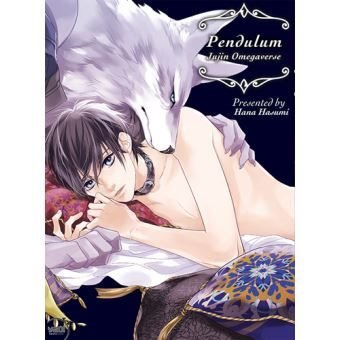
(what if you added furries into omegaverse? WHAT IF?? - Japan)
There's countless popular omegaverse manga too, and the dynamics only moderately resemble the ones we're familiar with in the west. Juujin is part omegaverse and part furry/beastmen - the alphas are all beastmen the omegas are humans - while something like Ookami-kun Is Not Scary only slightly resembles omegaverse dynamics as a hybrid series - beastmen are really popular in Japan in part b/c of historical mythology (you see the combination of romantic Beastmen and Japanese culture & folklore in Mamoru Hosoda's work The Boy and the Beast and Wolf Children).
Megumi & Tsugumi (2018) is so popular they're an official English edition published by VIZ's imprint SuBlime and that's a straight up omegaverse story.

(look at the omega symbol on the cover loud and proud baby)
So if Pit Babe was influenced by anything, it certainly wasn't "the west" it was Japan, Korea and China. Because those countries have a thriving omegaverse sub-genre going and have had such for 10 plus years now. Supernatural is popular in Japan, yes, and that may be where Japan and Japanese fans originally found omegaverse as a fictional sub-genre.
HOWEVER
Japanese fans took the sub-genre, bent it, played with it, and evolved it into their own thing. As such, other countries in their proximity, like Thailand, China, and Korea who read BL and GL manga, found it and were like "hey, we wanna play too!"

(is that an omegaverse yuri novel I spy?? yes, yes it is)
When I watched the Red Peafowl trailer, it had more in common with Kinnporsche, History: Trapped, along with films and shows like: Jet Li's The Enforcer, and Fist of Legend, Donnie Yen's Flash Point, Raging Fire, and Kung Fu Jungle, Han Dong-wook's The Worst of Evil, Kim Jin-Min's My Name, Lee Chung-hyeon's The Ballerina, Baik's Believer & Believer 2, Yoshie Kaoruhara's KeixYaku, popular Don Lee films The Gangster, the Cop and the Devil and Unstoppable alongside BL manga like Honto Yajuu and Bi No Isu (probably one of the most well known yazuka manga to date).
youtube
youtube
youtube
Like, we're seeing a rise in mafia based BLs and people think that's because of "western influence" and not the absolute insane success of kinnporsche??? Especially in countries like China, Korea, Taiwan, Philippines and other Asian countries???
Mafia films and gang shows aren't even that popular here in America/Europe; don't get me wrong, they still get made and exist, but the last full length film was The Irishman which did not make it's budget back, and while Power is still on-going it's not a smash hit either. The heyday of Breaking Bad, The Sopranos, The Wire, Goodfellas, and Scarface are long gone. And if you've watched any those shows or films they have very little in common with Kei x Yaku, Kinnporsche, or Red Peafowl in tone, or style.
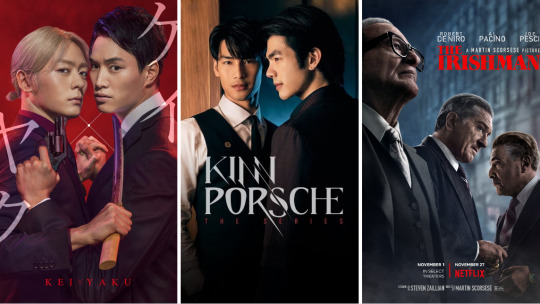
(who knew martin just wanted to make his al pacino/robert de niro fanfic come to life all these years?)
Another example, The Sign, which is clearly taking inspiration from Chinese costume dramas: Ashes of Love, Fairy and Devil, White Snake (and it's many adaptions), Guardian, & Ying Yang Master Dream of Eternity. Alongside Hong Kong and Korean cop and romance shows like Tale of the Nine-Tailed, Hotel Del Luna, Director Who Buys Me Dinner, First Love, Again, and previously mentioned cop dramas.
youtube
youtube
youtube
Like, I know y'all don't think Twins is influenced by, what, American sports classic Angels in the Outfield?? Gridiron Gang?? Rocky?? Nah that shit is inspired by the popularity of sports manga like Haikyuu!!, Slam Dunk, Prince of Tennis (which even has a Chinese drama adaption), and the like. And also probably History 2, & Not Me but I'm like 87% sure Twins is just Haikyuu fanfic.
So like, does this mean that there's NO history in which American and European cinema influenced these countries? What, no, obviously that's not true, American/European totally have had media influence on countries like Korea, Japan, etc.
Astro Boy by Osamu Tezuka considered "the father of manga" was inspired by Walt Disney's work on Bambi. Another more recent and prominent example is director Yeon Sang-ho and his film Train to Busan.
"And it was Snyder’s movie [Dawn of the Dead, 2004], not the 1978 original, that filmmaker Yeon Sang-ho recalled as his first encounter with the undead. “That was when I started my interest in zombies,” Yeon said, in an email interview through a translator from South Korea. Even today, he added, “it’s the most memorable and intense zombie movie I’ve ever seen.”" (source)
HOWEVER, the global influence doesn't stop there. It's not a one-way street. Yeon Sang-Ho was inspired by Zack Synder's Dawn of the Dead, a remake of George Romero's own work, but Yeon Sang-Ho's work has inspired countless Korean film makers to make their own zombie media; following Train to Busan there's been: Kingdom (2019 - current), All of Us Are Dead (2022), Zombie Detective (2020), Zombieverse (2023), Alive (2020), Rampant (2018).
And hey, wouldn't you know it now we're starting to see more zombie media coming out of places like Japan (Zom 100 the manga, movie, and anime) and High School of the Dead.
Do you know what Domundi's series Zombivor (2023, pilot trailer only) reminds me of? It's NOT The Walking Dead (which is the only relevant zombie media America has created in the last decade) it's Korea's All of Us Are Dead (2022). Comparing the trailers, the settings, the tone, it's clear where Zombivor is pulling inspiration from: Korean zombie cinema. NOT American zombie cinema.
youtube
youtube
youtube
In fact a lot of Domundi's shows - Cutie Pie, Middleman's Love, Naughty Babe, Bed Friend - are all very clearly inspired by Korean filmmaking, specifically that of romantic kdramas from the 2016 - 2020 era. Not always in story, but rather in technique.
This is media globalization. It's not simply ~The West~ influencing non-American/European countries but countries who are often more close in terms of: proximity, culture, and trade are going to have more influence on each other.
It is far more likely that Aoftion (Naughty Babe, Cutie Pie, Zombivor) was influenced by watching Train to Busan, All of Us Are Dead, and other Korean zombie shows and films than a single episode of Walking Dead.
My point isn't that this goes one way only, but rather it is very literally a global thing. This includes American and European film makers being influenced by non-American and European cinema.
Martin Scorsese, Steven Spielberg, Darren Aronofsky, Christopher Nolan, the Wachowski sisters, George Lucas and James Cameron have all been influenced by Japanese film making, especially the works of Akira Kurosawa, Satoshi Kon, and Mamoru Oshii.

John Wick's entire gun-fu sub-genre is heavily influenced by classic Hong Kong action films, specifically John Woo films. Legend of Korra, The Boondocks, Voltron, Young Justice, My Adventures with Superman are all obviously inspired by Japanese anime but animated by a Korean animation studio (Studio Mir). Beyond that, the rise in adult animated dramas like Castlevania, Critical Role Vox Machina, and Invincible to name a few are very clearly taking inspiration from anime in terms of style. The weebs that were watching Adult Swim's Inuyasha, Bleach, and Dragon Ball Z have grown up and are now working in Hollywood.
Okay so like, what's the point of all this? What's the issue? Since American/European cinema does influence et all cinema does any of this really matter?
YES.
I take contention with this line of thinking because it centers "the west" and our supposed individual importance way to much. Declaring definitively that "BL is being influenced by western tropes" and then including tropes, narratives, and film making styles that aren't inherently western and actually have major roots in the cinema of various Asian countries, removes the existence of individual history these countries have which are rich, varied, and nuanced. It removes the "global" part of globalization by declaring "the globe" is really just America and Europe.
It distills these countries down to static places that only exist when American/European audiences discover them.
BL doesn't exist in a vacuum you can trace the development of Korean BL to the development of Korean het dramas almost to a T. You can also trace their development to the queer history of each country and how Thailand interacts culturally with China, Japan, Korea, etc and vice versa. It also ignores the history of these countries influencing American cinema as well. Don't mistake "the globe" for only your sphere of experience.
Anyway James Cameron is a damn weeb y'all have a good night.
Check out other posts in the series:
Film Making? In My BL? - The Sign ep01 Edition | Aspect Ratio in Love for Love's Sake | Cinematography in My BL - Our Skyy2 vs kinnporsche, 2gether vs semantic error, 1000 Stars vs The Sign | How The Sign Uses CGI | Is BL Being Overly Influenced by Modern Western Romance Tropes?
[like these posts? drop me a couple pennies on ko-fi]
#kinnporsche#pit babe the series#the sign the series#twins the series#red peafowl the series#domundi#gmmtv#chaos pikachu speaks#fucking a this was an entire essay#i should drop a ko-fi link cause good god damn#chaos pikachu metas#Youtube#pikachu's bl film series
293 notes
·
View notes
Text
Notes on a South Asian Tropical Cyrodiil (and more!)
So, many TES fans know that before Oblivion, Cyrodiil was supposed to be tropical. The most striking phrase to describe it, "most is endelss jungle", says it all. The quick and snarky explanation is that Todd Howard watched LOTR, was "inspired" by it, and that's why everything in Oblivion looks sort of like a Rennaisance Fair. In any case, I think it was a huge missed opportunity, especially in a world where most popular fantasy is European inspired, to have replaced what could have been very cool tropical enviroments with what is frankly a lame "Talos used his magic" lore retcon. You can read the 1st edition of the Pocket Guide to the Empire to see what we missed.
But it's not only Cyrodiil which we missed this way… Tamriel just makes more sense as a tropical continent. While the size and the exact location of the continent is discussed by nerdier nerds than me, I think it does make sense like this, and not only that, we have a very interesting world parallel to compare it to: India. From a tropical rainy south to the cold mountains of Skyrim, Tamriel is surprisingly similar to the Indian subcontinent, and many of its geographical quirks can be explained if, instead of assuming a temperate Cyrodiil, we go all out with that concept. This is going to be a long post, you have been warned.
So with that in mind, I'll try to make a not-so brief tour (with some evocative pictures along the way) of a rebuilt tropical Tamriel, following the rains of the moonson:
The position of Tamriel, in this case, would be roughly where the Indian subcontinent is located in real life, that is again, tropical, stretching the Tropic of Cancer (is there a name for the tropics of Nirn? Interesting to think about) Here, we see our numbers pan out well: Tamriel is mentioned to be between 4000 and 3000km across east to west and 2000 and 3000km south to north. VERY, VERY roughly, there is 4000km between Pakistan and Myanmar, and 3000km from Sri Lanka to the northern tip of Tibet. Plot that on a map, and you already can see some coincidences. Now, this is a rather average continent, not Pangea sized like some imagine Tamriel to be. This does help explain why, for example, the interior of Cyrodiil is rainy and good for agriculture instead of a desert. But it also means that it's very likely that Tamriel is ruled by monsoons. Monsoons are complex, but they basically form when there are plenty of warm places for water to evaporate (the South Indian ocean), and mountains that block cool winds from the opposite direction (the Himalayas). We have a very similar situation here, with a mountainous Skyrim on the north of a tropical Cyrodiil facing an equatorial southern ocean. So, what happens are monsoons, perhaps not as strong as IRL India, but carrying rains very deep into the continent. This would feed the rivers and the rich agricultural areas of Cyrodiil, and would have some other consequences.
So let's imagine our trip South to North. In the South, in Black Marsh, Blackwood and Lleyawiin, and Pellentine (southern Elsweyr) we would find, much like in the original lore, humid tropical climates, jungle, wetlands, and my favorite, mangrooves. I would expect mangrooves to stretch in this whole area, across rivers. In fact, one of the reasons why Black Marsh could be so hard to explore and control by the Empires at Cyrodiil would be the presence of thick mangrooves all over its coast. This is the region of Cyrodiil that would most resemble "endless jungle".
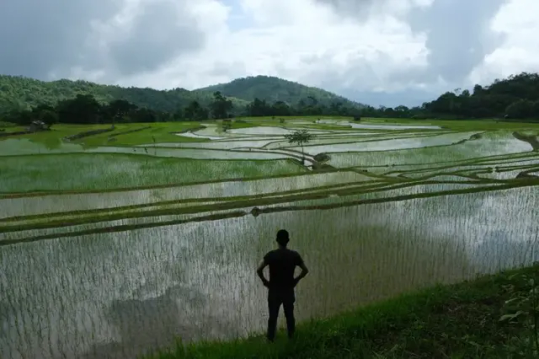
(Rice fields in India, what I imagine most of this Tropical Cyrodiil would look like)
However, as any lore person knows, Anequina, northern Elsweyr, is arid desert. Does this mean a contradiction? Far from it, we have a similar example in IRL India: the Deccan Plateau, which has a semi-arid to arid climate. This can be easily explained by higher elevations up to a small mountain chain separating it from Cyrodiil to the north, and the fact that little rain would reach behind this "Anequina Plateau" would make the region of Kvatch and Anvil more dry much like in canon, in this case, more scrublike. This highland desert would not be as harsh as Elsweyr is usually concieved, maybe, but its driest regions might justify places such as Dune. (On that matter, it always bothered me to read about the "cities" of southern Elsweyr and there being only two or three there. If I had to redesign it, I would move some from the north to the south).

(the Deccan Plateau in India, it gets greener or drier according to the monsoon)
Keeping on our tour of Tamriel, the Topal Bay and the very rainy Black Marsh funnels the rainy monsoon from the south towards central Cyrodiil. Here we find the endless jungle of the Nibenay Valley. But unlike the rainforests of Elsweyr and Black Marsh, these dense forests and rich river plains are mediated by the monsoon winds, with dry seasons alternating with copious rain. This has huge effects on agriculture and culture in general, as agriculture is defined by the rythms of the rain. Keeping with our South Asian theme and the 1st edition of the Guide to the Empire, Cyrodiil would have huge extensions of rice paddies, as well as terrace farming and much hardier crops in the highlands, instead of the… well, almost absent agriculture we saw in Oblivion. The food, clothing, architecture and overall culture of Cyrodiil would be very different with this. The original Pocket Guide said some of its main exports besides rice and fruit are moon sugar and silk. Moon sugar in Cyrodiil, can you believe it?
Another thing I imagine Cyrodiil would be famous for would be fish and seafood, well, river food. Rice plantations can host fishes and crustaceans to get some extra protein, and well, what about mudcrabs? Hell, as preparing muddy soil is vital for rice cultivation, no wonder mudcrabs are considered a nuisance. Imagining critters in gameplay in such an enviroment also makes my mind roam. Tigers, elephants, rhinoceros, and this is not even getting into the more mythical creatures you could find, instead of endless wolves… Rice cultivation is also more labor intensive than other crops, and it also has a deep impact on the terrain, "terraforming" so to say, huge expanses into paddies and terrace farms. This level of cultivation also requires an established infraestructure of irrigation. While this does not necessarily means a centralized goverment, as farmers can build it and maintain it by themselves, the rise of an empire, i.e., the Empire, will also increase the complexity of these systems, adding canals, dams, reservoirs and more ambitious projects, like we see in India and China. I am sure some people more knowledgeable about those cultures can comment more.
While this Cyrodiil is a tropical/subtropical region covered in "endless jungle", some parts might indeed resemble the rolling hills and grasslands you see in Oblivion. Deforesting jungle for pasture is something very common around the world (some have joked this mass deforestation was later in canon explained as a gift from Talos lol) and you can see the results, like in tropical Australia and my closer Mata Atlantica, do superficially resemble temperate pastures in say, Europe. Until you notice the palm trees, of course. But yes, I can see the Nords being a mostly herding people (more on that below) bringing their sheep and cows to the tropical lowlands and, well, deforesting to make space for them.
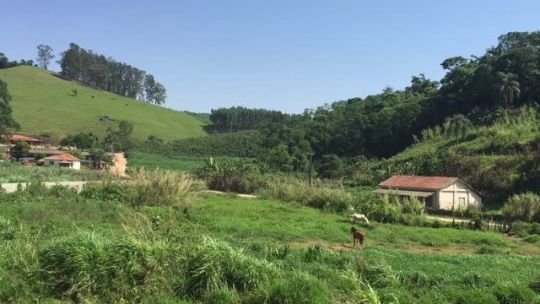
(ranches in Sao Paulo state, Brazil, notice the palm trees)
Imperial City just so happens to be built in an island in the middle of several river crossings, in what seems to be a swampland. The first thing that came to mind when I read that was Tenochtitlán. The districts of Imperial City would have been built over the centuries on artificial islands on a shallow lake, using plentiful mud and organic matter to make fertile chinampas. I believe this would make for a striking sight. Instead of just a city in the middle of a empty island, you would see the White-Gold tower and the rest of Imperial City rising from Lake Rumare, surrounded by rich farmland and its districts joined by walkways. (much like the old descriptions, actually, could you believe I wrote that without reading them?)

(Reconstruction of Tenochtitlán... and I just noticed, it's surrounded by (volcanic) mountains too, much like Imperial City)
Much like the Pantanal is one of the sources to the Paraguay River (which merges with the Paraná and then the Río de la Plata) IRL, here, the swamps of central Cyrodiil would be the source of the Niben. This does raise an interesting question, where is the source of the Niben? Is it Lake Rumare? No, I believe it would be several smaller rivers all the way from Bruma and even Skyrim. These small, violent mountain rivers eventually flow into the Rumare wetlands and only THEN in the placid great Niben. You DON'T want to be caught in one of the mountain valleys in rainy season. This does raise the question; won't the developments upriver, like Imperial City itself and the surrounding farmland, affect the course of the river downwards? There's plenty of water from the rain, but a more developed Cyrodiil might indeed have to grapple with this, supposing, for example, they manage to dam the river.
Looking west, we got the Colovian region, said to be composed of drier highlands and cliffs in the early Pocket Guide. Probably cut from the rain because of the Anequina Plateau, this is indeed more arid or "mediterranean", though I actually see it as more Australian. Maybe some of the drier parts near Hammerfell, resembling Argentine Cuyo and the northwest, would be a distant cry from the wetlands, having thorny dry forests and dry valleys, where yes, you could plant wine. The wetter cloud forests (much like the Yungas in South America, the place where the rain reaches last) could maybe be the home of the last pre-Imperial cultures of Cyrodiil. Fascinating places.

(Jujuy, Argentina. Just *near* are the Yungas cloud forests, where the last rains from the Atlantic meet the Andes, making for some AMAZING places)
Given that I mentioned enviroments near to/on the Andes IRL, let's talk about potatoes. Potatoes are unique crops, because they are the only ones who offer such calories and also be planted in cold enviroments like Europe. Or Skyrim. The discovery and spread of potatoes would cause demographic shifts on people living in cold areas. And they also originated in a unique enivorment IRL: the Andes, actually with possible hybridization from the Magallenic foresWHAT I MEAN, is that potatoes are very important and have been domesticated in very specific conditions. The Wroghtgarian Mountains would seem like a perfect equivalent of the Andes at the first glance, but they would be very different. The Andes, located between the Pacific Ocean and the greater Amazonian region, are very, very unique enviroments. These mountains, however, are in between inner seas. Something like the Atlas or the Alps? In any case, if there is some people who would appreciate hardy tubers that can grow in mountainous places, they are for sure the Orcs, or perhaps the Reachmen. Maybe an hybridization even between them?
This returns me back to Bruma and Skyrim. Some people (who make those excellent Oblivion mods) imagine Bruma with a Tibetan flavor. Personally, I imagine it more like Pakistan or Afghanistan, with lots of mesas and plateaus and valleys. It would look dry and rocky with some very fertile valleys by snowmelt, but it would look like a snowy wonderland on winter, indeed, Pakistan and Afghanistan are very snowy. Eventually, of course, ending up in the great barrier of the Jerall mountains and finally, Skyrim.

(the Alps? Skyrim? No, this is Kashmir on winter!)
In this scenario, Skyrim would be a quite dry place… or would it? There is no need for the Jeralls to be a straight line of peaks like the Himalayas. They could be a more "broken" series of mountains, like the southern Andes, but in any case, the rain from the south would clash into the higher mountains. Indeed, that is what actually happens in the Himalayas, the foothills of the Himalayas are some of the rainest places IN THE WORLD. These small valleys are something very unique and not very well known part of the world IRL. I can imagine the Skyrim equivalent would be as unique too, hard to navigate and live in. The forests of the Rift and Falkreath would be mazes of windy forests valleys, each with their own unique secrets under a perpetual fog and drizzle. This is a very interesting enviroment to imagine, where again, some of the older cultures of Tamriel could still live.
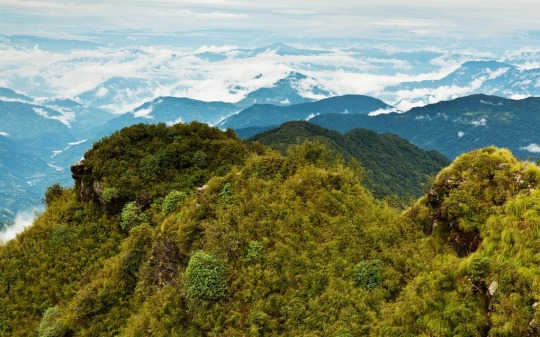
(forests of Bhutan, note how the humid valleys stretch into the distance before the cold Himalayas begin)
However, what does Skyrim look like once you cross the border with Ralof? I imagine some sort of more fertile Tibet, not as high as the Tibetan plateau, allowing for forest and alpine tundra. This is mostly because, while Skyrim is high up, I don't imagine as a plateau, but rather a series of broken mountains like the North American Rockies, which makes sense when you account for all the volcanic activity (there is another super-volcano down in Skyrim but nobody notices). I imagine that Skyrim would be a primarily herding pastoral land before the introduction of hardier crops such as potatoes, and even then. Nord culture would be very interesting reimagined like this; hillforts guarding herds of sheep and cows. It would also create a clash between the very, very agrarian south and the nomadic herding north, with High Rock and Hammerfell a gradient between the two.
I decide I will stop here, I haven't even touched Valenwood (though its subtropical forest seems rather coherent to me), High Rock (the most boring part of Tamriel IMO), Hammerfell, Summerset Islands (if you don't have tropical elves in your setting, you're a coward), or whatever the hell is going on Morrowind. But I hope you enjoyed this worldbuilding exercise and how to make sense of Tamriel's crazy geography. Next time, I'll try to play with tectonics and see if we can make it even more interesting.
But here we enter a problem; if we are operating on a level where Cyrodiil is roughly at the same latitude of India, wouldn't that make Skyrim too far from the poles to allow its tundra like climate, even with elevation? No doubt. Tibet is only as cold as it is because it's the roof of the world and far from any ocean. The northernmost tip Skyrim, like Tibet, would be at the latitude of Turkey, Korea or California, which can get quite cold, but not to the level of what we see on Winterhold or Dawnstar (Solitude sounds familiar, though). What's more, having an ocean up north would only moderate the temperature. Cool currents often don't bring cold per-se, just decrease rainfall. This would end with a very temperate and pleasant Skyrim instead of tundra. Which is on its own, interesting to explore.
Could Nirn be going through an ice age, like it's implied with the dissapearance of Atmora? Possibly, but it would imply revising everything I said before, as ice ages decrease rainfall and mess up with weather patterns all over the world. A colder Nirn would explain a lot, though.
If you liked what you read and would like more worldbuilding, consider tipping me on Ko-Fi and send me stuff to talk about, or just send an ask! I'm the kind of guy who reads encyclopedias and RPG manuals for fun, so I have plenty to talk about about everything from fantasy to science fiction to speculative evolution and alternate history!
#worldbuilding#tes#elder scrolls#skyrim#oblivion#the 'do more tropical worldbuilding you eurocentric cowards' agenda#fantasy#cosas mias
239 notes
·
View notes
Text
where is your future spouse from
from left to right; intuitively choose the pile you feel more connected to. To make it easier, you can take a deep breathe, close your eyes and ask for guidance to your deities or guides. These are all general messages, so just take what resonates and leave what doesn't. This reading is timeless. If it resonates, feedback is always appreciated and motivates to keep doing pick a card readings. You can donate here.
dividers: @animatedglittergraphics-n-more


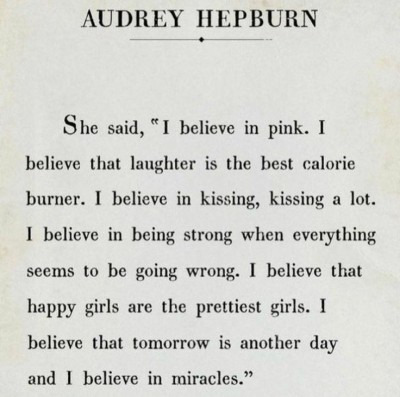


pile 1
I feel like for most of you who picked this pile this person is of Asian descent. Keep in mind that Asia is a big country with many countries and ethnic groups, so I will try to break it down more.
I do feel like for some of you who chose this pile, your future spouse might be of korean origin, but I feel like they will be half white and/or live in the west, like Europe or North America. This message seems to be more true for those of you who have strong scorpio, aquarius and possibly aries influences in your chart. If your name starts with C, E or P or has a more vintage vibe to it, it can still be for you.
For another group who chose this pile, I'm sensing someone of indian origin, I'm getting they could be kashmir and, for some of you, even telugu as well. This feels especially true for those of you that have a strong sagittarius or leo influence in your charts or if your name starts by A, L or U.
I am getting for a minority of people who chose this pile, your fs might be of levantine origin, mainly lebanese and/or palestinian, living most likely in Lebanon, for some of you, or in Southern Europe as of now. I feel like this message is especially true for those of you with strong scorpio, taurus or libra placements. Especially those who get M, S or V as first names.

pile 2
For this pile, I'm specifically getting southeast asian, most likely indonesian and/or malay. I feel like they might be living in Singapore right now. If you are a capricorn, a virgo or a cancer or have strong influences from these signs, this might be the ethnicity of your fs.
I'm getting potentially someone is of sub-saharian african descent mixed with european for some people who picked this pile. I'm getting this person might have ancestors from different parts of Africa and Europe and I'm getting difficulty pinpointing some exact places. I feel like for some of you, they might be west african and partially british. For others, this person could be afrolatino from the caribbean. Signs for this one I'm only getting scorpio and pisces, but I'm also gettingthe initials C, M and D.
There is a smaller group of you that could have a fs from a eastern african country too, potentially Ethiopia or Somalia. I'm getting this is likely true for you especially if you always enjoyed cultures and foods from different african countries, if you like the color red or if your name starts by J, F or E. Potentially if you like orange or are a capricorn rising/sun/moon.

pile 3
I'm getting a strong european influence here. I feel like this person might be italian and, for some of you, of a similar background like iberian, balkan or greek. You will meet them while on a trip to their country or city, if you are from the same country. This might resonate the most with those of you who like the color green, to wear t-shirts or whose name starts with B. If you are a cancer, leo, libra or taurus, this might also be true for you.
For others of you, I'm getting this person might be mexican, likely of a mestizo background. I feel like they might be in the US living right now, although for some it could even be Canada. This might resonate more with you if you like green vegetables like spinach or broccoli, if you like coke, if you like the colors red and pink, if you like mermaids or are of strong aquarius, aries or gemini.
For some of you, although a larger minority, your fs might also be argentinian or brazillian. This can be true especially if you like soccer (I think this one are my guides joking), cinema, romance movies/books, the color white and pink, lana del rey. Alternatively, if your name starts by N, A or Z and your signs are leo, virgo or cancer.

#pac#pick a card#pick a pile#fs pac#fs pac reading#fs pick a card#future spouse readings#future spouse pac#future spouse pick a card#free readings#intuitive readings#tarot readings#love readings#love pac readings#free intuitive readings#free tarot readings
815 notes
·
View notes
Text
Happy Dracones Monday! Firedrakes!

Happy Dracones Monday! This Monday we're looking at four dragon species at once, the firedrakes! Here they are, approximately to scale with eachother.
The glitterdrake is the smallest, the size of a large lizard or small cat. They live in laurel forests on Macaronesian Islands, in the Atlantic near Africa. Glitterdrakes aren't based on mythology; I put them on Macaronesia because I couldn't find Macaronesian dragon mythology but I am trying to put dragons EVERYWHERE on the map. Also, putting these dragons on an archipelago of islands means I can have a lot of island subspecies and colour morphs - glitterdrakes represent colourful fantasy dragons, so having them come in every colour (sapphire blue, ruby red, emerald green, royal purple, burning gold, shining silver etc.) was important to me.
The Welsh dragon is smaller than the other European firedrakes at 1.5 meters. They are no less fierce - there aren't any common firedrakes in Wales as a common firedrake cannot maintain a territory there for long. Originally I had the Welsh dragon as a subspecies of the common firedrake, but decided that this dragon had so much personality and folklore that it could get it's own chapter.
The common firedrake is found in Western Europe, 4m long. When designing these I noticed in a lot of heraldry dragons don't seem to have horns? Ears yes, but hornless? Also I noticed that dragons in heraldry tend to have the dorsal finlets from the back of the head to between their shoulders, but no further, which is something I have kept for all my firedrake species.
The viridian firedrake is the largest firedrake species, over 5m long. They are found in Eastern and Southern Europe, and in Russia. I based their appearance on old storybook illustrations to make them look very 'classic', which is why they have horns and cheek frills compared to the more heraldic and hornless common firedrake.
Rant about the term 'firedrake' under the cut! :)
In other creative works, these are called 'classic dragons', 'European dragons', 'true dragons' and 'Western dragons', but I am not a fan of these terms - 'true dragon' implies other dragons are untrue dragons, which is nonsense. 'Western dragon' or 'European dragon' is largely accurate (the 4 legged 2 winged dragon design is common in Europe and the West) but there are other Western and European dragons (wyrms and wyverns) and I find these terms confusing when other types of dragons are taken into account. Also, some Asian dragons also have 4 legs and 2 wings. 'Classic' dragons... serpentine and wyrmish dragons are more classic than 4 legged 2 winged firebreathers, etc.
I went with 'firedrake' as a term for these dragons because 'drake', 'drachen', 'ddraig', 'drac', 'drak' and 'dreki' are all words for dragons like this in European languages, and because firedrake is a word used in literature like some translations of Beowulf and, of course, Tolkien's Legendarium (firedrake comes from Old English fȳrdraca). I think it's a good word that easily conjures up fire breathing four legged, two winged dragons without making them more 'true' or 'classic' than other dragon types or tying them specifically to 'European' and 'Western' countries.
In Dracones Mundi I really try to get a huge diversity of dragons across to the readers. There are around 68 dragon species in this project, only 4 of which are firedrakes. I want to show readers there is more to dragon mythology than "here is a western dragon, they are evil and associated with fire, here is an eastern dragon, they are good and associated with water" - I want to dig deeper. I want people to know about azhdarha, about cuélebres, about coameh. So I'm shining the spotlight away from these firedrakes and trying to make them a small part of a much larger discussion. :)
#Dracones Mundi#Dracones Monday#Firedrakes#Dragons#Schedulling firedrake post for the monday before the firedrake plushies restock on friday hehe#Firedrake plushies found on Barksbog website on Friday 24th May 2024
114 notes
·
View notes
Text
Didn't wanna clog up your post, and these sources are more about relationships of time with space/place, but here's some stuff that I've encountered:

---
“Temporal sovereignty”. Contemporary US/Australian claims over time-keeping. Reclaiming agency by operating on Indigenous/alternative time schedules. The importance of the “time revolution” in the Victorian era to Euro-American understandings of geology and deep past, precipitating nineteenth-century conquest of time. Mid-twentieth century understanding of “deep time” and its co-option by the Australian state. "Deep time dreaming".
Laura Rademaker. “60,000 Years is not forever: ‘time revolutions’ and Indigenous pasts.” Postcolonial Studies. September 2021.
---
How "time is a form of enclosure". Checkpoints, "baroque processes to apply for permits to travel", fences, incapacity to change residences, and other "debilitating infrastructures" work to "turn able bodies into a range of disabled bodies" by "stretching time". This is a "slow death" and a simultaneous "slowing down of life" because "it takes so long to get anywhere" and "movement is suffocated". Thus "time itself is held hostage". This "suspended state" of anxiety and endless wait-times "wreaks multigenerational psychological and physical havoc". "Checkpoints ensure one is never sure of reaching work on time. Fear of not getting to work then adds to the labor of getting to work [...]. Bodies in line at checkpoints [...] [experience] the fractalizing of the emotive, cognitive, physiological capacities" through a "constant state of uncertainty". "The cordoning of time through space contributes to an overall 'lack of jurisdiction over the functions of one's own senses' [...] endemic to the operation of colonial rule". This "extraction of time" produces a "depleted" and tired person "beholden to the logistics" of administrative apparatuses, community suffers and "communing is thrawted".
Jabir K. Puar. "Spatial debilities: Slow Life and Carceral Capitalism [...]." South Atlantic Quarterly 120. April 2021.
---
The "apocalyptic temporality" that presumes extinction. Indigenous Polynesian/Pacific perceptions and ways of being "destabilize the colonial present" and also "transfigure the past" by "contesting linear and teleological Western time". Indigenous "ontologies of cyclical temporality or inhabitation of heterogenous time". How United States and Europe colonized Oceania for weapons testing and conquest of tropical Edens while rendering local Indigenous people "ungrievable" and "without future". "Pacific time is a layering of oral and somatic memory". Instead of accepting an apocalyptic future or doomsday or nightmare, assert the possibility of a livable future, in spite of "Western temporal closures".
Rebecca Oh. “Making Time: Pacific Futures in Kiribati’s Migration with Dignity, Kathy Jetnil-Kijiner’s Iep Jaltok, and Keri Hume’s Stonefish.” MFS Modern Fiction Studies. Winter 2020.
---
Colonial "space-time homogenization". The experience of "homogenous, empty time". Orientalist "time lag" and the naturalization of a supposed East-West hemispheric divide. Late Victorian imperial conceptions of temporality. The British establishment of the Greenwich meridian and International Date Line. The influence of British imperial seafaring and cartography on the establishment of time and on European/US feelings towards the Pacific Ocean. How the origin of English science fiction literature, space travel aspirations, and time travel narratives coincided with the Yellow Peril and xenophobia targeting East Asia.
Timothy J. Yamamura. "Fictions of Science, American Orientalism, and the Alien/Asian of Percival Lowell". Dis-Orienting Planets: Racial Representation of Asia in Science Fiction. 2017.
---
Imprisonment as time-control. Here “the question of the past the present and the future indeed time itself looms” especially around the prisoner. “The law renders punishment in units of time”, taking away a the right to a future. There are alternative worlds, many of them, which have been practiced and brought into being, which colonization tried to obscure. There is “a whole anthropology of people without future embedded in the assumptions that justify mass imprisonment as poverty management”. "The prison’s logic exterminates time as we know it”. In prison, bodies have been alienated from time and history ... the punishment seems endless ... to “achieve a measure of agency and possibility it is necessary to redeem time”, to refuse the doom, fated to a life of abandonment.
Avery Gordon. “Some Thoughts on Haunting and Futurity.” borderlands. 2011.
---
Bursting the Limits of Time: The Reconstruction of Geohistory in the Age of Revolution (Martin J.S. Rudwick, 2010) explores how the advent of European sciences like geology, preceding the "time revolution" when Europeans experienced revelations about the scale of "deep time", happened alongside and after the Haitian Revolution and other abolitionist movements. French, German, and British naturalists translated the explosion of "new" scientific knowledge from the colonies, so that the metropolitan European audience became a market for historical and scientific "narratives" about how "nature" and time functioned.
---
Prartik Chakrabarti's writing on time, temporality, and "the deep past" as British imperial concepts built in conversation with colonial encounters with South Asia. (British Empire reaching such heights in the middle of the nineteenth century at the same time that the newly professionalized sciences of geology were providing revelations about the previously unknown vast scale of "deep time". New colonial anthropology/ethnology also presumed to connect this "primitive" past with "primitive" people.)
See Chakrabarti's "Gondwana and the Politics of Deep Past". Past & Present. 2019.
---
We must witness and consider "multiple space-times" to understand how "unfree labour" of plantations was "foundational" to contemporary work, movement, subjugation, health, etc. We must "trace the geneaology of contemporary sovereign institutions of terror, discipline and segregation" [workplaces, imperial/colonial nations, factories, mines, etc.] back in time to plantations. How "the [plantation] estate hierarchy survives in post-plantation" times and places, with the plantation "being a major blueprint of socialization into [contemporary] work". The plantation was "a laboratory for [...] migration regulation in subsequent epochs" that practiced methods of racializing and criminalizing.
Irene Peano, Marta Macedo, and Colette Le Petitcorps. "Introduction: Viewing Plantations at the Intersection of Political Ecologies and Multiple Space-Times". Global Plantations in the Modern World: Sovereignties, Ecologies, Afterlives. 2023.
---
“Slow life” and the relationship between “settler colonialism, carceral capitalism, and the modulation of ... registers of time,” including “historical time, the stealing of time through the expansion of labor time, ... and the cordoning off of space through time”. For example, as in occupied zones or at border checkpoints, “the cordoning off of space through time” includes physical architecture like fences and customs, obstacles that impede movement and rhythm, so that “nothing ever happens on time” and there is “a stretching of time”. All the wasted time spent in line, showing papers, waiting for confirmation, etc. “is not a by-product of surveillance, it is the point of surveillance”. Such that “uncertainty becomes a primary affective orientation ... flesh as felt” with a racializing effect“. "This is a biopolitics conditioned through pure capacitation and its metrics”:
Jasbir Puar. In: “Mass Debilitation and Algorithmic Governance” by Ezekiel Dixon-Roman and Jasbir Puar. e-flux Journal Issue #123. December 2021.
---
"Starfish time". Indigenous Australian/Aboriginal perceptions of time and "attending to more-than-human agencies of time". Acknowledging the timescales of entire ecosystems, as part of multispecies relationships, a "transcorporeal collaboration". Cyclical time vs linear time. Contrasting timescales experienced by insects that only live a few days and creatures that live for decades. "Starfish may seem to be still" but they slowly move; "larval time" and "the time it takes for eggs to develop and hatch"'. The "immensity of the alterity is literally incomprehensible"; "we can't know what these beings know" but we "should seek respect and be aware of how our lives are entangled".
Bawaka Country including, S. Wright, S. Suchet-Pearson, K. Lloyd, L. Burarrwanga, R. Ganambarr, M. Ganambarr-Stubbs, B. Ganambarr, D. Maymuru. “Gathering of the Clouds: Attending to Indigenous understandings of time and climate through songspirals.” Geoforum. January 2020.
---
The use of calendars, dates, clocks, and industrial/corporate temporality as fundamental to the rise of plantations and financialization in United States/Europe, with a case study of the modern Colombian/Latin American state. Observance of certain dates and strict adherence to specific calendars support "mythologized deeds and heroic retellings" of colonization and industrialization. “The evolution and internalization of disciplined concepts of time” were intimately tied to the rise of wage labor in industrializing England and later during the global ascendancy of work and industrialized plantation monoculture, but the persistence of alternative time should “serve as a reminder that futures and the demarcation of epochs are never as simple as a neatly organized calendar”.
Timothy Lorek. “Keeping Time with Colombian Plantation Calendars.” Edge Effects. April 2020.
---
Indigenous people of Alaska and the US control over time management. For the past 50 years, Yupiak people have been subject to US government’s “investment in a certain way of being in time” which “standardized the clock” and disrupted human relationships with salmon. This US management model “anonymized care” and made “a way of attending to the life and death of others that strips life of the social and ecological bonds that imbue it” with resilience and meaning, which “ignores not only the temporality of Yupiaq peoples relations with fish, but also the human relations that human-fish relations make possible”. This disregards “the continuity of salmon lives but also the duration of Yupiat lifeworlds ... life is doubly negated” ... “futures depend on an orientation to salmon in the present”.
William Voinot-Baron. “Inescapable Temporalities: Chinook Salmon and the Non-Sovereignty of Co-Management in Southwest Alaska.” July 2019.
---
"Idling" and "being idle" as a form of reclaiming agency and life. Case studies of fugitive Blackness in Caribbean plantation societies. “Disruptive waiting”. “The maroon’s relationship to time challenges [both] the totalizing time of the modern state, but also the [...] narratives to negotiate struggle in the [...] present" in "antagonistic relationship with colonial power". Defying the “European narrative of modernity”. Refusing to be productive.
Amanda Lagji. “Marooned time: disruptive waiting and idleness in Carpentier and Coetzee.” Safundi: The Journal of South African and American Studies. March 2018.
---
Indigenous futures. "It is important to remember that some futures never went anywhere" and "yet they survive. These are futures suppressed and cancelled by colonial power." These are "parallel futures". "Colonial power must control the past so as to deny the emergence of" an alternative future; "colonial power creates a future in advance so that no others will take its place". Poor, racialized, Black, Indigenous people manifest alternative futures.
Pedro Neves Marques. "Parallel Futures: One or Many Dystopias?" e-flux. April 2019.
---
The "legacy of slavery and the labor of the unfree shape and are part of the environment we inhabit". The "idea of the plantation is migratory" and it lives on "as the persistent blueprint of our contemporary spatial troubles", so we must seek out "secretive histories" that no longer "rehearse lifelessness".
Katherine McKittrick. “Plantation Futures.” Small Axe. 2013.
---
“The temporal dispossession” of Congolese people. There is an “impossibility” of “predictable time” because temporal dispossession “disrupts the possibility of building a future”. Livelihoods/income is driven by market and price fluctuations in United States and Europe tech industries, so “there is an inescapable day-to-day sense of uncertainty”. As Mbembe says, “in Africa, the spread of terror ... blows apart temporal frames”.
James H. Smith. ‘Tantalus in the Digital Age: Coltan ore, temporal dispossession, and “movement” in the Eastern Democratic Republic of the Congo.’ American Ethnologist Volume 38 Issue 1. February 2011.
---
“Slow death”. Chronic illness not just as a byproduct of colonialism/dispossession, but also as part of its aim, a weapon that debilitates people, who become exhausted. Dooming poor and racialized people to lives “without future” through debility, “a condition of being worn out”. Relationship of illness, lack of healthcare, and debt as functionally incapacitating, a form of death sentence. A “zone of temporality” unfolding unlike abrupt/sudden traumatic events and becoming an inescapable condition.
Jasbir K. Puar. The Right to Maim: Debility, Capacity, Disability. 2017.
---
The extension of poverty, landlessness, homeless, and imprisonment. "To be unable to transcend the horror of such a world order is what hell means", and "without a glimpse of an elsewhere or otherwise, we are living in hell". The utopian is not only or merely a “fantasy of” and for “the future collectivity” but can be claimed and built and lived here, now. There is "no guarantee" of “coming millenniums or historically inevitable socialisms”, no guarantee that “the time is right” one day if we wait just long enough. Instead: "can a past that the present has not yet caught up with be summoned to haunt the present as an alternative?" The "utopian margins", an alternate world crossing time and place, an "imaginative space and temporality to trace the remains of what "was almost or not quite, of the future yet to come", living as if it were the present. Colonialism tried to crush the many headed hydra of the revolutionary Atlantic, those who challenged the making of the modern world system.
Avery F. Gordon. As interviewed by Brenna Bhandar and Rafeef Ziadah. “Revolutionary Feminisms: Avery F. Gordon.” As transcribed and published online in the Blog section of Verso Books. 2 September 2020. And: Avery Gordon. “Some thoughts on the Utopian.” 2016.
---
The US/European "city is the site of regulatory regimes" that try to impose a definitive narrative about history, progress, and possible futures. But it cannot achieve "a wholly Apollonian, seamlessly regulated realm" because the land "continues to be haunted by the neglected, the disposed of, the repressed". The "commodification" of landscapes "circulates an imaginary geography" mediated through advertisements, labels, soap operas, television, etc. which celebrate "sanctioned narratives and institutionalized rhetoric". A "wild zone" of informal spaces, debris. "Ruins are places where the things, people, and "other memories can be articulated". There is "a spectral residue" that "haunts dominant ways of seeing and being". "Alternative stories might be assembled", so that we can respect the people banished to abandonment, the periphery, and reclaim agency.
Tim Edensor. “The ghosts of industrial ruins: ordering and disordering memory in excessive space.” Environment and Planning D: Society and Space volume 23. 2005.
Also, how "master narratives of history as progress decompose" when faced with "a continuously remembered past" when "the ghosts of this past rear up in the ruin" to expose "the debris of unprecedented material destruction" of colonialism/empire-building. These "hauntings rupture linear temporality" and recall those people beaten down as "the trash of history". It is "essential to see the things and the people [...] banished to the periphery [...]."
Tim Edensor. "Haunting in the ruins: matter and immateriality". Space and Culture Issue 11. 2002.
---
"Many kinds of time" of bacteria, fungi, algae, humans, and "Western colonialism meet on the gravestones". Some creatures, like lichen, are very long-lived and "these temporal feats alert us that modernity is not the only kind of time, and that our metronomic synchrony is not the only time that matters". The "long duree evolutionary rapprochements to the quick boom and bust of investment capital" where "minor forms of space and time merge with great ones". Extinction is "a breakdown of coordinations with reverberating effects". Ghosts remind us that we live in an impossible present, a time of rupture. "Deep histories tumble in unruly graves that are bulldozed into gardens of Progress". "Endings come with the death of a leaf, the death of a city, the death of a friendship".
Elaine Gan, Anna Tsing, Heather Swanson, and Nils Burbandt. “Introduction: Haunted Landscapes of the Anthropocene.” Arts of Living on a Damaged Planet: Ghosts and Monsters of the Anthropocene. 2017.
---
Everywhen: Australia and the Language of Deep History. (Edited by Ann McGrath, Laura Rademaker, and Jakelin Troy. 2023.)
Chapters include: "Bugarrigarra Nyurdany, Because of the Dreaming: A Discussion of Time and Place in Yawuru Cosmology" (Sarah Yu et al.); "Songs and the Deep Present" (Linda Barwick); "Yirriyengburnama-langwa mamawura-langwa: Talking about Time in Anindilyakwa (James Bednall); "Across 'Koori Time' and Space (John Maynard)
#im sorry i guess i accidentally deleted this post so here it is again#colonial#imperial#temporality#abolition#indigenous#multispecies#ecology#temporal#futures#haunted#halloween i guess idk
298 notes
·
View notes
Note
there was Chinese interest in the Out Of Asia theory, in both the Republic, Chiang Republic and People’s Republic periods before the Out Of Africa theory became commonly accepted. Was the 1954 Yeti expedition done just from the Nepalese-Indian side or were the American agents and “anthropologists” given access on the Sino-Tibetan side of the Himalayan border?
During the early part of this century, it was absolutely believed for a long time that the deserts of Western China were the most likely place of human origins, as seen in this migration map from 1944, made from the best available knowledge of the time:
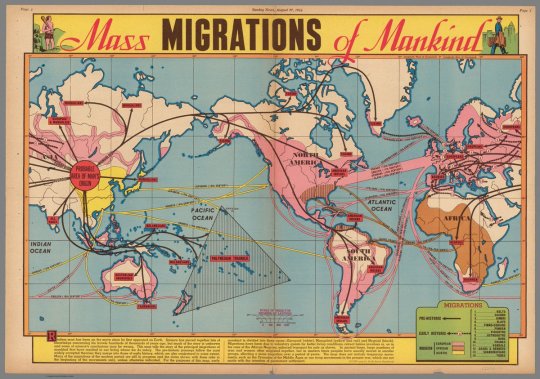
Remember, the oldest fossil remains at this point were in China, where Homo erectus was discovered (originally known by his initial place of discovery in Chungkotien Cave, nicknamed "Peking Man"). The discovery of Australopithecus and Homo habilis in Olduvai Gorge and South Africa, which place human origins in Africa, were not until the 50s and 60s, so it seemed entirely reasonable that Homo sapiens evolved in Western China.
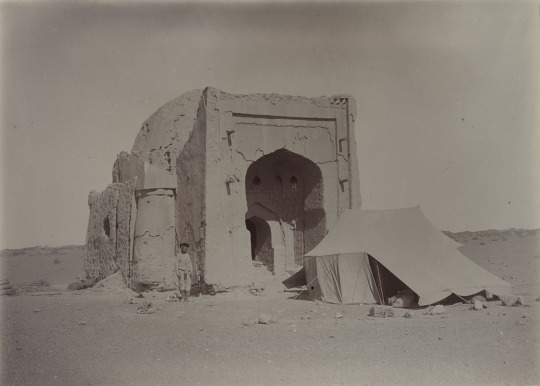
The idea that China's desert regions were the origin of modern humans and culture is seen a lot in pop culture from 1900-1950, mainly because there were tremendous explorations in the region, especially Aurel Stein's expedition of 1908, who ventured into the Taklamakan Desert to find the Dunhuang Caves and Khara-Khoto, a city destroyed completely by Genghis Khan and vanished in the desert.
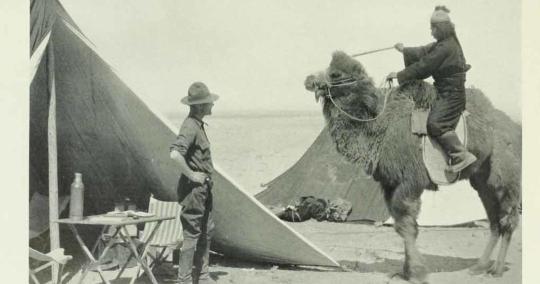
If you've ever heard of Roy Chapman Andrews and his famous expeditions in the 1920s, it's worth noting that he ventured into the Gobi Desert looking for human remains....not dinosaurs, and the discovery of dinosaur eggs was an unexpected surprise.

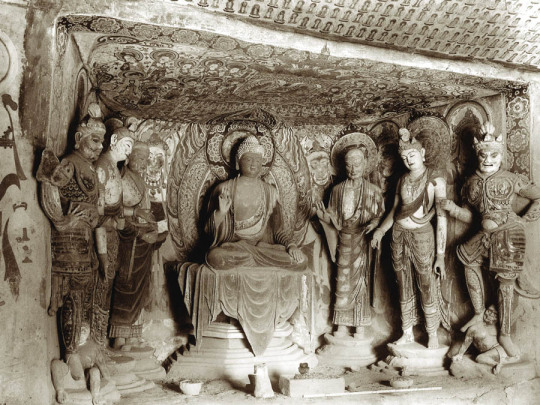
For that reason, there was a short lived Silk Road Mania that seemed to be a smaller scale predecessor to the pop culture dominating Egyptomania of the 1920s. It's bizarre to read adventure and fantasy fiction of the 1910s-1920s that features mentions of Silk Road peoples like the Kyrgyz, Sogdians, Tajik, Uigurians, and Tuvans. The best example I can think of would be the Khlit the Kossack stories of Harold Lamb (who also wrote a biography of Tamerlane), which together with Tarzan and Tros of Samothrace, formed the core inspiration for Robert E. Howard's Conan the Barbarian.
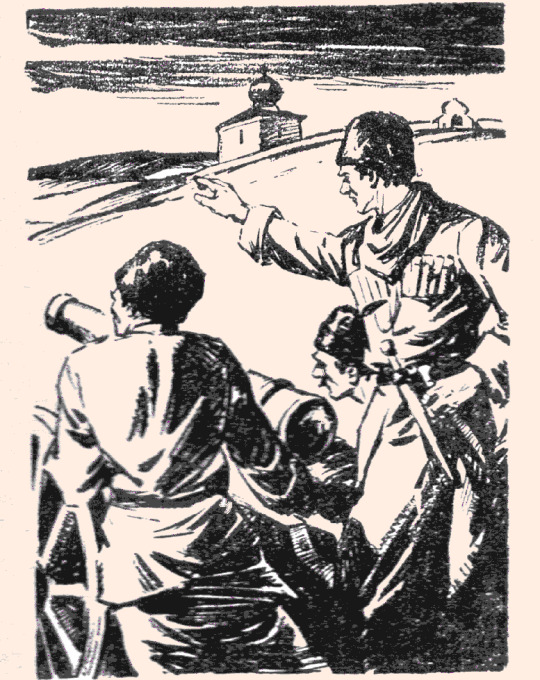
The most interesting example of this would be A. Merritt's Dwellers in the Mirage, which featured a lost city in Xinjiang that was the home of the Nordic race, who worshipped their original religion, the kraken-like squid devil god Khalkru. It was widely believed in this era that Nordics emerged from Central Asia originally, and while it's easy to write this off as turn of the century racialist claptrap pseudohistory (along with Hyperborea legends), in this case, it is actually true: a branch of the Indo-European family lived in West China, and 5,000 year old redheaded mummies have been found in the region. As usual, A. Merritt was right on the money with his archeology, more so than other 1920s authors. After all, his "Moon Pool" was set around the just discovered ruins of Nan Madol, the Venice of Micronesia.

Jack Williamson's still chilling Darker Than You Think in 1948 was also set in the Silk Road/Central Asian region, as the place the race of shapeshifters emerged from, Homo magi, who await the coming of their evil messiah, the Night King, who will give them power over the human race.
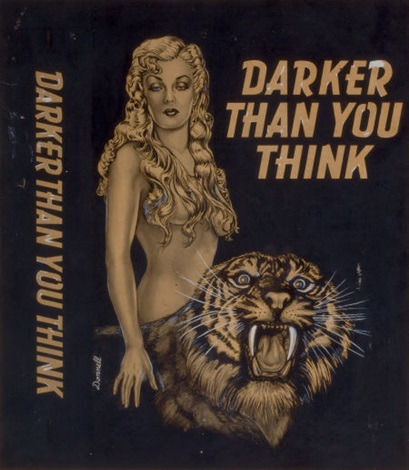
H. Rider Haggard set "Ayesha: the Return of She" (1905) in Xinjiang, among a lost Greek colony in Central Asia (no doubt based on Alexandria on the Indus, a Greek colony in modern Pakistan that was the furthest bastion of Greek Culture). This was also two years after the Younghusband Thibetan Expedition of 1903, where the British invaded Tibet. At the time, the Qing Dynasty was completely declining and lost control of the frontier regions, and the power vacuum was filled by religious authority by default (this is something you also saw in Xinjiang, where for example, the leader of the city was the Imam of Kashgar).
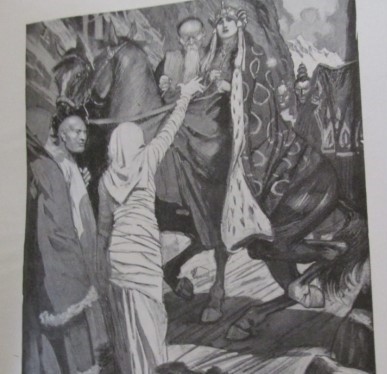
This is one of the many British invasions they have attempted to cram down the memory hole, but if you ever see a Himalayan art piece that was "obtained in 1903-1904" ....well, you know where it came from.
Incidentally, there's one really funny recent conspiracy theory about paleontology, fossils, and China that I find incredibly interesting: the idea that dinosaurs having feathers is a lie and a sinister plot spread by the Communist Chinese (who else?) to make American youth into sissy fancylads, like Jessie "the Body" Ventura. How? By lying to us and making up that the manly and vigorous Tyrannosaurus, a beast with off the charts heterosexuality and a model for boys everywhere, might have been feathered like a debutante's dress. What next - lipstick on a Great White Shark? The long term goal is to make Americans effeminate C. Nelson Reilly types unable to defend against invasion. This is a theory that is getting steam among the kind of people who used to read Soldier of Fortune magazine, and among abusive stepfathers the world over.

...okay, are you done laughing? Yeah, this is obvious crackpottery and transparent sexual pathology, on the level of the John Birch Society in the 60s saying the Beatles were a Communist mind control plot. Mostly because animals just look how they look, and if it turned out that the ferocious Tyrannosaurus had feathers and looked like a fancylad Jessie Ventura to you, well, that's your problem and mental baggage, really.
I was left scratching my head over this one. But there is (kind of) something to this, and that is that a huge chunk of recent dinosaur discoveries have been in China. I don't think it has anything to do with a Communist plot to turn American boys into fancylads, but more to do with a major push in internal public investment in sciences in that country, and an explosion of Chinese dinosaur discoveries. If you want to see a great undervisited dinosaur museum, go to the Zigong Dinosaur Museum in Sichuan.

Pop quiz: what living scientist has named more dinosaur discoveries? It's not Bakker or Horner. The greatest living paleontologist, Xu Xing, which is why a lot of recently found dinosaurs are named things like Shangtungasaurus.
244 notes
·
View notes
Text
Please note that the families listed here were chosen purely by number of speakers, as those would be the most likely to be spoken. There are still MANY more language families not listed
Some of these have over a thousand languages so I cant list all of them, but I'll list a few languages from each family and the generam geography of it under the cut
Austronesian
Languages spoken mostly in Southeast Asian archipeligos including Indonesian, Malay, Javanese (NOT Japanese), and Tagalog, among others
Sino-Tibetian
Languages spoken mostly arround East and Southeast Asia along with some parts of Central Asia including Chinese (all dialects), Burmese, Tibetic languages, and Nepali, among others
Indo-European
Languages spoken mostly around Europe and South-Southwest Asia including English, all romance languages, Greek, Albanian, German, Hindi, Bengali, and Sanskrit, among others
Afro-Asiatic
Languages spoken mostly around Northern ans Northeaster Africa, and West Asia including Egyptian, Hebrew, Arabic, Amharic, and Hausa, among others
Fun fact! When counted as a single language, Arabic alone is spoken by over half of the native speakers of Afro-Asiatic languages
Atlantic-Congo
Languages spanning most of Africa exclusing Northern parts including Fula, Wolof, Swahilli, Kirundi, Luhya, Makua, Xhosa, and Shona languages, among others
Fun fact! This family has the most languages of any language family at 1,453 total!
Dravidian
Languages spoken mostly in souther India, along with surrounding countries, including Telugu, Tamil, Kannada, Malayalam, and Brahui, among others
Turkic
Languages spoken in many countries throughout (mostly central/centeal western) Asia and Eastern Europe including Turkish, Azerbaijani, Uzbek, Uyghur, and Kazakh, among others
Fun fact! While we mostly think of Turkic languahes being from Eastern Europe and Central Asia, Proto-Turkic actually originates from East Asia around China and Mongolia! It's seldom spoken there anymore
Japonic
Languages spoken mostly in Japan (Note: NOT including the Ainu languages) including Japanese, Ryukyuan, and Hachijō, among others
Fun fact! Japanese was considered an isolate language (a language with no other languages in its family) until the Ryukyuan languages joined it in the Japonic family.
It also has the lowest number of languages of the ones listed, with 13 languages.
Should Koreanic have made it onto the list (It was JUST bekow Kra-Dai for # of speakers), that would be the lowest with only 2 languages!
Austroasiatic
Languages spoken mostly around South through East Asia Including Vietnamese, Khmer, Tagalog, among others
Fun fact! Two-thirds of people who speak an Austroasiatic language speak Vietnamese
Kra-Dai
Languages spoken mostly in Southeast Asia and Southern China including Thai, Lao, Bê, among others
#I spent an unreasonable amount of time on this#I KNOWWWW this poll is gonna be dominayed bt indo-european but
48 notes
·
View notes
Text
Denzel Washington being cast in Antoine Fuqua’s upcoming Netflix movie as ancient Carthaginian general Hannibal is sparking some controversy in Tunisia, the home country of the great military commander.
According to French newspaper Courrier International, there are complaints about depicting the Carthaginian general as a Black African being made in the media and the Tunisian parliament. Member of Parliament Yassine Mami has pointed out that Hannibal, who was born in 247 BC in Carthage — now known as Tunis, the Tunisian capital — was of West Asian Semitic origin. “There is a risk of falsifying history: we need to take position on this subject,” the Tunisian politician reportedly stated.
Concurrently, French-language Tunisian newspaper La Presse has published an editorial in which it similarly objects that depicting Hannibal as a Black African is “according to Tunisians and many observers, a historical error.”
However, Tunisian culture minister Hayet Ketat-Guermazi had a different, more pragmatic take on the matter.
“It’s fiction. It is their [Netflix‘s] right to do what they want,” she responded, according to French newspaper Le Monde. “Hannibal is a historical figure and we are all proud that he was Tunisian. But what can we do?” She went on to note that she is trying to negotiate with Netflix to shoot at least a portion of the film in Tunisia. “I hope they decide to shoot at least a sequence of the film here and that that this is publicized. We want Tunisia to go back to being a location where foreign films are shot,” Ketat-Guermazi said, as reported by Le Monde.
Representatives for Netflix, Washington and Fuqua did not immediately reply to a request for comment.
The controversy in Tunisia over Washington playing Hannibal is reminiscent of the uproar sparked in Egypt in April over Britain’s Adele James, who is of mixed heritage, playing Cleopatra in Netflix’s docudrama “Queen Cleopatra.” The first-century Egyptian queen was born in the Egyptian city of Alexandria in 69 BC and belonged to a Greek-speaking dynasty. Egyptian academics went on a rampage over the fact that Cleopatra was of European descent and not Black.
The still-untitled film about the Carthaginian general will be written by John Logan, the three-time Academy Award winner who scribed Martin Scorsese’s “The Aviator” and Ridley Scott’s “Gladiator.”
According to the official logline, the movie is “based on real-life warrior Hannibal, who is widely regarded as one of the greatest military commanders in history. The film covers the pivotal battles he led against the Roman Republic during the Second Punic War.”
Hannibal invaded Italy while riding a Northern African war elephant. Under his lead, the Carthaginians won key victories against the Romans, allowing Hannibal to occupy the majority of southern Italy for 15 years. Eventually, Hannibal was defeated by the Romans at the Battle of Zama after they counter-invaded North Africa.
Fuqua most recently directed Washington in the action-thriller “The Equalizer 3,” in which Washington reprised his role as ex-Marine Robert McCall.
Washington is currently involved in another war epic, the upcoming sequel to Ridley Scott’s “Gladiator,” which has resumed shooting in Malta after production was halted due to the SAG-AFTRA strike.
_______________
Netflix is at it again i see.
63 notes
·
View notes
Note
I would love to hear an extended rant about being an artist in a periphery country, if you're willing to say more.
sorry for this being late! but yes there are quite a few things to this.
1) EDUCATION/JOB OFFERINGS
when you are from a periphery country, the art education accessible to you is much worse than in the imperial core. yes, i know, you dont need to go to art school, you can be self-taught, you dont need a degree, but art school is about making potential job connections. in a country like croatia, you do not have access to those connections. you do not have ability to go out, show your portfolio, get reccommended by a professor for a listing. the education is stunted as well - the animation program here is atrocious, my building had an attic with dead pigeon corpses littering the room, there are no drawing tablets, computers are old, the building is leaking, but the lack of ability to make professional connections is the main concern.
also, your degree? people hear you got a degree from a balkans land and you are immediately less worthy in their eyes. your name, which is not anglo? crossed out, despite your skills. job offerings within your country? good luck, everyone lives in poverty, you are underpaid, and studios hiring can be named on fingers of one hand. you are left with earning online.
and you are left with earning illegally. making author contracts with pdv, taxes, etc is incredibly complicated when working over upwork, doing commissions etc. this does constitute as black market. we do not hand in our taxes like in the usa, theyre deducted from our salaries and contracts immediately. this means you are missing out on potential grants and statuses which require you to provide papers of your commissions. it also means that transfering money over paypal has to go into small amounts to your own account, to avoid suspicious activity.
2) ART TOOLS ACCESIBILITY
a thing that is very frustrating. living in a periphery country? good luck getting anything. art shops are scarce. art shops do not carry the same amounts of items, and they are more expensive than in their mother countries. you are left with office supply stores. the quality of accessible paints and other tools is lower. its already been proven that products shipped to eastern europe are of lower quality and higher price than in the west; and this goes for paints too.
this means that, if you do traditional art of any kind, you are left with shopping online. this includes shipping - youre in a periphery country? congrats, often it does not ship to it, or the shipping is atrocious. your choices? mostly deutschland amazon - every item has 10€ shipping minimum. prices are not adjusted to your salary, they are adjusted to the german ones, which are much higher. i have to regularly order fillings for my brushpen. it is not available in my country. the price on amazon is significantly higher than on pentel website, and their usa based shipping. yes, just the price of the product. pentel does not ship this to my country btw. aliexpress is what you have, it takes 2 months to arrive, is frequently lost in mail, and even with it being cheaper - its still a bit more expensive than the original.
3) ALGORITHM, SOCIAL MEDIA
this is the third thing - algorithm works against you if you are not from the imperial core. of course, there are timezones, but also - your posts tend to be shown to people who live around you; meaning you have harder time breaking into the international market, and that market is the only viable one.
4) BEING PAID LESS
being eastern european (or asian or southern american or african or...) gets you lower salary. i indeed love my employers, i adore the comic i work on so much that its become my own project as well, theyve been nothing but kind to me - but the fact remains that i, as an eastern european, am and will always be paid much less than my usamerican counterparts.
5) JOB OPPORTUNITIES, ONCE AGAIN, ENGLISH LANGUAGE
adding this but: its hard to break into cartoon network/adult swim/etc without being presently there. you cannot get to conventions, you cannot have your portfolio checked, and you must speak english. yes. anglos take english-speaking for granted, and fail to realize that actually speaking english for us is not a privilege, its a necessity, and its a tool of imperialism. it is unfair that you cannot do ANYTHING without speaking english. you cannot get jobs, you cannot advance your career, and while i personally speak english quite well, not everyone does, not everyone should have to.
anyway sorry for the length
#txt#artists on tumblr#eastern europe#imperialism#usa imperialism#marxism#marxist leninist#socialism#communism#ask
34 notes
·
View notes
Text
African populations today harbor more genetic diversity than any other population in the world, and the genetic diversity found in non-Africans represents only a subset of that found in Africa.
The claim has even been made that East Africans are more genetically different from West Africans than Europeans are from Asians. That diversity has fit well with the fossil evidence that the human species originated in Africa. It is well established that when a new species, be it plant or animal, arises and spreads, genetic differences accumulate more in geographic regions where the species has been present longer. The more distant populations represent only a small subset of the genetic variation that arose nearer the center of origin.
Some of the genetic variants the researchers identified, coding for both light and dark skin pigmentation, were quite ancient, between 300,000 and 1 million years old, meaning that skin color variation seems to have been present since before the emergence of Homo sapiens.

Tishkoff noted that the work underscores the diversity of African populations and the lack of support for biological notions of race.
WE ARE NOT BLACKS WE ARE AFRICANS WE LITERALLY DEFINE DIVERSITY
“Many of the genes and new genetic variants we identified to be associated with skin color may never have been found outside of Africa because they are not as highly variable,” Tishkoff says. “There is so much diversity in Africa that’s not often appreciated. There’s no such thing as an African race. We show that skin color is extremely variable on the African continent, and that it is still evolving.”

#neil#african#afrakan#kemetic dreams#brownskin#afrakans#africans#brown skin#african culture#afrakan spirituality#afrakan woman#deep reddish brown skin#tupac#epic video#kemet#africa#joe rogan#genetic diversity#genetic#genetic testing#ethiopian#yoruba#asian#neil degrasse tyson#aliens#aliens built the pyramids#ancient astronauts#ancient history#ancient astronaut#ancient civilizations
355 notes
·
View notes
Note
Okay, while we're on the topic of names I say as though we were in the middle of a discussion about names which we were not, I'm kinda having a crisis over Hilmes' name rn.
Because I looked up what the name Hilmes meant bc y'know me I wanted to see what symbolism I could cram in there, I was met with the shock of my life.
Hilmes, turns out, is supposedly an Old English/Anglo-Saxon name?????
It means dweller on the hill, by the way.
And y'know I get supremely uncomfortable when I encounter like, things that don't mesh with the setting, ie western/northern european elements in a west asian setting???
Look, I like the way the translation did his name, Hilmes is a good translation, it actually matches up w the katakana pronunciation (unlike fucking Hermes)
But this kinda threw me for a loop, lol.
I'll still continue referring to him as Hilmes, but I'm now considering messing w his name for Wolfsong. Just a teeny bit. We'll see if I end up choosing to do so.
It's okay, I've got you (or rather, the first fan translator of the novels has). It's actually almost certainly supposed to be Hirmiz. I highly recommend reading their notes concerning this here, I think you'll find them really interesting both in terms of the origin of the name and the reasons why Tanaka might have chosen it.
#arslan senki#the heroic legend of arslan#hilmes#definitely not old english/anglo saxon#Tanaka is consistent in making reasonable choices in this respect as far as I know
22 notes
·
View notes
Text

As of Chapter 81, this is crew of the Courageous from Time to Orbit: Unknown, a marvellous space drama and mystery by @derinthescarletpescatarian . Original sketches & character guide below. Many of the character appearances are based on headcanon, but the ones with asterisks are based on canon sources.
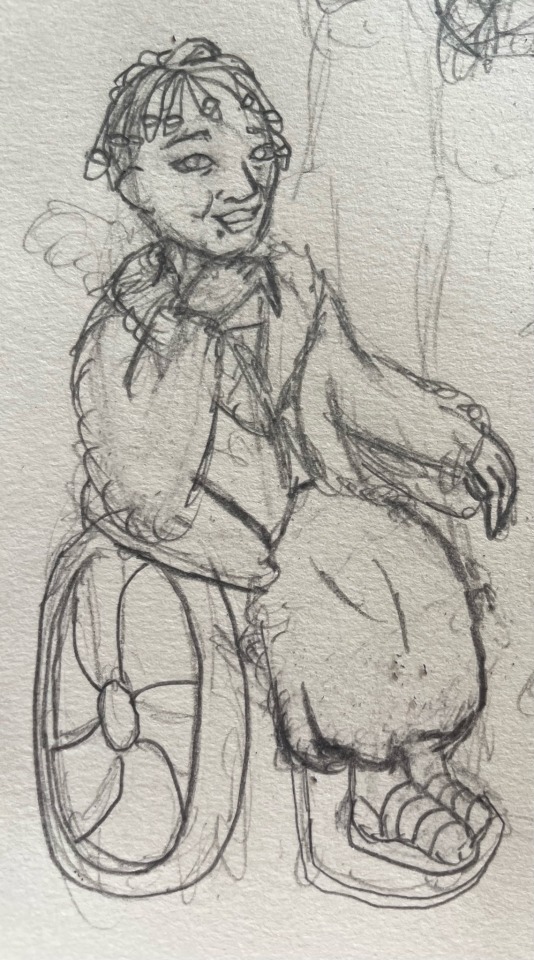
I drew Celi first! I figured I would do the people in front, who I would have to draw most of their bodies, and work from left to right. Celi has had multiple organ issues, so she looks a little drawn (lol) and is still recovering in her wheelchair :). I drew her with small braids just hanging from the top of her head, as I imagine she’s too tired to take care of her hair very often, but still wants to keep some, so she has a sort of cap of braids. There’s probably a term for the style, but idk. Celi is of North African descent.

Next to Celi is Renn. His head looks wonky because I was drawing at an angle at the time. He’s been mostly depilated, and I imagine him in a sort of Aang-meets-European-in-a-tracksuit outfit because he’s calm and tries not to do much drama, but is condescending. Renn is of West Asian/American/Tarandran descent.
Then we have Public Universal Friend (PUF) 2 with the twists. I figure it doesn’t want a lot of hair to take care of, and this style keeps it out of its face. Same clothes as the other PUF. It is kneeling, with one leg propped up. It is of coastal Southern East African descent.
*Then laying on the ground is Tal. Ke is looking at kes tablet because ke doesn’t like focusing on other things. Tal is unfortunately at the wrong angle to show off ke’s face tattoo. Small afro kept stylishly kept, along with some garters and a short skirt. Ke is laying down because ke feels like it. Ke is of West African/American/Texan descent.
*Then we have Aspen, the POV character, smack dab in the middle. Canonically, they’d don’t have a headband as far as we know, but I think their hair looks nice pushed up like that. They are wearing a jumpsuit like last time, but this time has a belt for flair, because Tal and Sunset convinced them. Aspen sits cross cross because they can and it’s a common sitting posture in Arborea. They are of West African/American/Arborea Atlantican descent.
Lina is kneeling like PUF2, but facing the other way. I gave her buns and square jewelery because I based her off of a Hopi woman’s ’do that I really liked, and Lina can be short for names like Catalina. She has freckles because they’re fun. She’s gained some muscle and weight since the last picture, which is great! She is of Hopi/Latin American descent.
Last is Sunset. She is a zeelite, a subculture interested in replicating and investigating pre-Neocambrian (aka our time) cultures. She is largely inspired by what she knows of punk, pastel goths, drag, and to be honest, Barbie (2023). She is voguing because she knows and appreciates the importance of looking good. Sunset is of Central African/of Sirius descent.

Now for the top row, left to right again!
First, we have Heli. She wears functional but pretty clothes because she appreciates utility but always wants to show off what she’s got. The newest addition to the crew, she’s a little spiky, but has a soft spot for Adin. She was inspired by a picture of a Sistergirl from Australia (my headcanon, I only saw a picture of her and was unable to find more specific information). Heli is of Indigenous Australian descent.
*Next, we have Adin. I keep forgetting to draw him with tattoos, so I added a neck one last minute. His look has probably changed the most - his canon picture came out only a few months ago, so I drew him differently the first time. Adin cooks a lot, so he doesn’t try to wear anything or have a hairdo that could be ruined by cooking. Adin is of West African/Arborea Atlantican/American/Texan descent.
*Next up, the tallest of the bunch (and I forgot to draw his left arm until last minute, we have Denish! He’s doing the Arnold Schwarzenegger pose. The gentle Giant of the group, I was unable to recapture his face quite the same way as last time, but I still think he turned out well. He’s one of my favorite space pirates. I think he wears high collars to hide Tinera’s hickeys. Denish is of West African/American/Texan descent.
Right in front of Denish is PUF 1, AKA Dr. PUF. Still has tousled hair, still has the same robe. PUF is kneeling. It is of European descent.
*Hanging off of Denish is Tinera! She’s changed also, as her official looks came out, though I think I’ve kept her pretty nice looking still! I forgot to give her glasses though :(. I gave her Garnet (Steven Universe) finger gloves because they look cool. Tinera is of Central African/Lunarian descent.
Under Tinera is Sam. He’s partly visually inspired by the Dad of some kids I watch, and Ballister from Nimona. He likes to gaze at the stars and wonder about all the stories that will be told about them. Sam is of South Asian descent.
*Lastly is Keldin (AKA Captain Sands). He’s always dressed well and keeps his hair well-coifed. Hardly anyone from the ‘first’ crew likes him. He is standing awkwardly farther away because he knows everyone near him isn’t his tan. Keldin is of West African/American/Trandran descent.
74 notes
·
View notes
Text


Please note that who gets to be "white" is contextual to the center of ethnic power in each region.
Dark-skinned people of Asian, African and Indigenous descent will never be white in any part of the world and will always be vulnerable to white skinned people of European descent. (Excepting the times Japanese and some East Asian peoples with an adequate lack of melanin have been granted conditional whiteness.)
However, Slavs, white Jews, white Latinos, white Roma (white skinned and associated with European origins) are fully white in places where they hold ethnosupremacy and achieve/are granted conditional whiteness of varying levels and privileges in the US, Canada, South Africa and other white settler colonies, and some parts of Europe (Jewish South African settlers had no idea what side of the apartheid fence they would fall until the white Afrikaners made clear they were accepted).
Whiteness in the Western world is also entirely in the purview of the imperial core's narrative. In the Western lens, Eastern Europeans eternally hover between the fact of being white-skinned Europeans and being Orientalised due to their histories as colonies of Russia and Ottoman empire and their shared heritage with Asia Minor. Even the narratives of the Holocaust erase the genocide of Soviet Jewry. (That's right, in Soviet Russia the Holocaust had nothing to do with Jews, which is why Putin keeps accusing Zelensky of being a Nazi). The US and Western Europe's manufacturing of consent for NATO's military alliance with Ukraine at the outbreak of its war with Russia involved efforts to elevate them to full whiteness that were routinely hilarious because demystifying and de-exoticising them (is that a word?) revealed the extent to which they had been Othered, paternalised and exotified (lots of "omg they're humans just like us even though they live in a shitty second world country" stories especially from the UK, ntm journalists parachuting in and seemingly being surprised they had McDonald's and internet access. You could not make this stuff up). You can contrast this directly with how much of a shit they don't give about Armenians because they're Russian allies, even though Armenians are literally white in the US. It's why I have to roll my eyes at the "they care about Ukrainians because they're white" discourse. That's entirely backwards— Ukrainians are white because NATO is invested in them. Otherwise they'd just be another former Soviet Republic up to their usual "savage shenanigans" like the rest of the Eastern Bloc.
You'd think you couldn't pull this same trick with non-Europeans, except that Apartheid South Africa deemed Japanese "honorary whites" (much like Nazi Germany proclaimed them honorary Aryans), and then, hilariously, the rest of the East Asians because they were so pissed off about it. White Australia otoh kept them stubbornly out.
Otoh, Islam is fully and irrevocably racialized (associated with the Middle East even though like...nevermind), which is why Bosniaks and Turks will never be given even conditional whiteness, European or not.
Whatever the geo-political hemisphere, under the global influence of white supremacy, the capacity for the casual public to empathize with a person recedes with the rise of melanin in their appearance. This is why abolitionists used white passing Black Americans to drum up support for their cause among Europeans, why more people will always empathize with white Eastern Europeans, why anti-blackness is its own creature and Black people are so universally dehumanized that even people that care about atrocities in the Middle East pay scant attention to the horrors in Africa where the West and Israel are equally implicated. In the landscapes of our imaginations, the Western cultural hegemony has created the image of dark bodies into a faceless, uncontainable, seething hoarde born to suffer and die; lives stripped bare of names, personalities, agency, intelligence, homelands and dreams.
(Please note this blog is anti-genocide no matter the colour of their skin, by which I mean that what's happening in Ukraine is also one, and no amount of Zionists with their flag in their bios makes it any more acceptable for them to be colonized and slaughtered than it is for any of the several Black and brown people being subjected to the same right now. Human rights are not predicated on good behaviour, or else we'd all be dead.)
#racism#anti blackness#white supremacy#congo genocide#sudan genocide#palestinian genocide#colonization#imperialism#holocaust#armenian genocide#apartheid#war propaganda#eastern europe#knee of huss#free palestine
39 notes
·
View notes
Note
Genuine question: you often talk about the West as if Greece wasn't Western and that leaves me in doubt… isn't it Western? I always see Greece referred to as such, so I figured it was. Like, I imagine there must be some details that don't completely fit into Western molds, but in general, isn't Greece Western and is it even considered one of the main origins of the West?
Hii! This is a very good question for someone who needs context!
In summary: Greece is not exactly Western. In fact, it has more things in common with countries that are considered Eastern. Greece definitely wasn't that "Western" in ancient times compared to the rest of the countries that are considered definitely Western today. Also, Europe has taken some stuff from Greece but most things it took are not Greek in culture, meaning they don't relate to us and we don't relate to them.
But from someone who's not from our general region and has little idea about our culture, there needs to be a big explanation, so all I have to say is:

Disclaimer 1: Let's appoint the US, the UK, and Germany as some examples of "definitely western" countries, as a guide. They are surely considered Western due to their geography and history.
Disclaimer 2: I'll speak in very broad terms about nationalities. In no way this is an attack on individuals who live in these countries. The statements are meant to be political and capture generic national sentiments. For example, the sentence "historically the Greeks don't like the Turks" doesn't mean that Greeks and Turks haven't lived (and continue) to live in peace under certain circumstances.
Everything exists within proper context and even I am using "Western" in a specific context. What is called "Western" today is a standard created by the European countries of Western Europe. And it doesn't make sense cause there are no clear limits between cultures. It's all a gradient, as I said in the past.
I also don't like how by "Western" we imply "progressive and technologically advanced". I haven't seen people fight about whether Albania is Western, although it's more Western than Greece geographically.
In fact, many a time I've seen maps like the one below isolate Greece and put it in the Western category but so many nations right above and west of Greece are not Western?? Notice how they show "West" = "pre-colonial/colonial nations/global empires (what I refer to as "the West" in my posts) + Greece" 😂 (Usually Turkey is also excluded, so I won't comment too much on that right now.) I mean... isn't this whole presentation... weird?? It's not even based on who is a NATO ally and who's not.
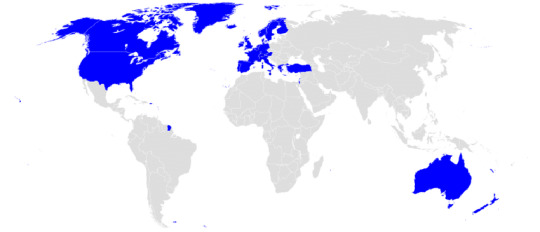
Greece is one of the most eastern European countries. Greeks existed in Minor Asia for thousands of years (Asian Greeks baby!) and we literally are right next to where Asia begins. Our capital for almost a thousand years was Constantinople which is in modern Turkiye, and Greeks still make pilgrimage there.
Our differences with the countries posing as the of the West are far greater than they want you to believe. The reason is that the western European powerful nations still want to claim the ancient Greek stuff as the basis of their national identity, and to do so they have to lump us in with their own kind. Only very recently they got "gracious" enough to do that. For most of history they claimed all things ancient Greek for themselves buuut they saw Greeks as "fallen from glory" and "mixed" and "these can't be the descendants of the ancients we admire!" (They had idealised our ancestors a looot in their minds, and by their own NW European standards) That's why maps such as the above exist.
The cultural divide in ancient times was much larger. We were kissing with tongue with Persians, Palestinians, Phoenicians and Lower Egyptians. The battle with Persians wasn't - as today west Europeans and the US want to frame it as a battle between East and West. The Persians were our freaking neighbours! 😂 Our cultures were - and still are - very similar. (Food, music, expression/openness, social politeness, phrasing)
Then came the old Rome, then came the Renaissance, and in these periods Western Europe got a bit more influenced by Greek aesthetics, for sure. But as I said the divide was greater when speaking about ancient times. Okay, our neighbors on the Italian and Iberian peninsula would be more like us, but the Germanic, Anglo-Saxon, Celtic, Norse, and Danish tribes were quite unrelated to the Greeks culturally. Even half of Italy (the Northern part) today don't see us as neighbors, because they are closer to other nations by land. (verified this with some friends abroad)
To go back to why I usually exclude Greece from "Western": "Western" is a standard term that former (and modern) colonial powers have created and choose to identify themselves and others with (if they deem them "worthy enough").
As I said, the term can be synonymous with power and progress, but it ignores powerful countries such as India, China, Japan, Korea, Saudi Arabia, and Iran which have greater industries and more power than Greece. (This is a 2017 map but it still holds, I feel😂) Notice that Greece is not even at the bottom.

Greeks also often feel we don't fit the Western mold. Usually, however, they use the term "European" to substitute the "Western" term but in our minds it's the same thing. Additionally, most Greeks growing up - especially with the rise of communication with other Balkanians through the internet - realise that we have most things in common with our geographical neighbours. The video below is an example of that.
youtube
So, why don't we feel that European/Western?
As I mentioned in the beginning, Europe is not Greek in culture. Few of the things West Europe took from us were partly influenced by the cultural climate at the time (like philosophy and the three-act structure of theater). What about the rest? What do trigonometry and astronomy and people voting have to do with one's culture? I mean are people supposed to understand my culture through functions and equations, or the 5th century BCE aesthetics of the human body?
(And to answer your question, no. They have no idea how our names, words, culture food, and music have been. They often confuse clearly Latin words with Greek words, and that's the pinnacle of their interaction with our culture😂)
We have more in common with Turks, Persians and Lebanese than we have with Germans and Swedes. Because Middle Easterners and Northeast Africans have been our neighbors for millennia. To further demonstrate the point, Greeks in Northwestern Europe feel more comfortable with Arabs, Turks, Persians and Indians than with anyone else. And they don't vibe with the Northwestern locals that much because the Greek culture is not close to theirs. (That's a generalization of course but you can't imagine how many Greeks I've heard stating that)
I don't find it unreasonable for someone to lump Greece with the Western countries because that's where our allies are at the moment. As a nation, we look to Western nations for infrastructure
(Although it doesn't work too well for us sometimes because the compatibility isn't there. Like the EU gives us money to plant certain trees that are not good for our climate and how often shit catches fire here). And, of course, sometimes Greece happens to be… geographically western than many countries. So in this case "western" also applies.
At the same time, someone should bear in mind that Greece has existed under the pressure-ehhh influence of Western European nations for a long time. After the fifteenth century, they've been stealing our artifacts, fetishizing our struggles, not listening to our people in Greek cultural characteristics (such as the language), noting our "unattractive" looks (and skin sometimes) etc. I mean, they still do all of this stuff sooo… how are we supposed to feel comfortable in the same group as them?
Add the Turkish occupation from 500-600 years so there's additional Islamic and Middle Eastern influence, and cultural exchange from Greeks and towards Greeks in the Ottoman Empire.
There's also the matter of religion and East Europe is religiously and - to a large degree - culturally Orthodox. This plays a larger part in the cultural divide between West and East Europe. In fact, religion played a big part, a thousand years ago, in the schism between west and east Europe.
This difference in cultures, and the dismissive attitude of the West towards Greeks and other East Europeans, shows from Charlemagne's time. A thousand years ago and more, West Europeans were calling Greeks (and generally Eastern Romans/ Byzantines) barbarians and degenerates. Greece has been orientalised a lot in Western art over the past few centuries.
The first colonial "stock company" in History was in the Byzantine/Hellenic island of Chios in the 14th century, established by Genoese occupiers! The island was managed by a monopoly share-charter "Company", Maona. The Company held the monopoly of the world's unique Chiot mastic, as well as control of the import and export trade, while many locals became slave-workers. The "Latins" (Genoese) took hundreds of buildings and homes for themselves. Later the Maona company expanded in Cyprus.
It had come to a point where Greeks and Byzantines in general preferred to be conquered by the Turks rather than the Latins (Francs, Venetians, Genoese). You can find the full history of this conflict in this article.
One should also bear in mind Greeks have been through slavery on a national level (called "chattel" too), and faced oppression, assimilation, and genocide. What I mean is: If someone is representative of the Western Powers…. that's not us 😂 We only play pretend. We are not the ones making the rules or decisions. For example, our PM asked the state of Israel (with which we are supposedly allies under Western contracts) to not harm the Greeks in Gaza, then the Greek Orthodox temple was bombed and our Western allies didn't give a shit.
Greece smiles and nods along so it can sit at the table with the Big Boys. It's not a Big Boy and I doubt it'll ever be for a long time. It can't turn towards the East (because Turkey, the old political and religious enemy) so it turns towards the West. And it has become an obedient puppy of the US and Germany. And if we refuse to play pretend, there's always some type of punishment. I won't absolve our country from all political responsibility. I'm just saying that we usually lack the power for things to go our way.
The reason for our nation's existence is the Western colonial powers (in Greece we call them the Big Powers) wanting to destabilise the Ottoman empire. They didn't give a shit about the Greek state existing. I mean sure they appreciated having one more pawn in the area, but they mainly wanted the Ottoman power to dwindle. The Big Powers gave and took land from us as they saw fit, for their own interests. (They did the same with other nations, too, of course). Our country's debt to the Big Powers started before our nation formed when they sold us half-ruined ships for a very high price.
(Although our debt became significantly worse after 2009, when our people gave money to stabilise their banks.)
So I ask again, how is a Greek - politically and socially - to feel comfortable in the Western group? Especially when we have actual neighbors in the Balkans and the Middle East who are almost like us culture-wise? And, don't East nations have Mathematics and Philosophy and Democracy (most at least) and Theatre and Astrophysics? In the study of things coming from Greece they have nothing to envy from the West. They were studying this stuff waaaay earlier, too!
So the argument of "who has taken the most from Greece" is purely political because if we actually measured, our neighbors are the ones who have the most similarities to us. (Yes, the political and social corruption rates too, as I've been told 😂)
Not to mention there can be found colonial/imperial attitudes from Western European nations which Greece cannot identify with. Except for the obvious neo-colonialism and the pressure to have more military bases on our grounds, there are more.
Some of these attitudes are; refusing to communicate in English, refusing to use subtitles and insisting on watching everything dubbed, straight up altering the names of foreign colleagues to appeal to them more, nitpicking on shades of white and what shade of white is "bad", having the impression that the world is as safe and comfortable as their own country, only getting you out of second class in their minds when you start speaking their language fluently exhibiting one of the highest forms of assimilation, treating East European cultures like an exhibition or a theme park.
Don't be mistaken, the use of language is a power play. Greece also has colorism, but the NW nations take it to another level, trust. It would kill them to admit they might have the same skin tone as someone from China, whereas the Greeks (although not void of racism) wouldn't think to compare the skin tones as different. And they don't categorize slightly darker peoples compared to theirs as another "race" entirely.
I know I rumbled again but there are many things to consider when it comes to Greece's position on the map that's not limited to geography. I also want to put many disclaimers and explanations around because someone away from our area is missing context, and they might misinterpret our notions through their own lens. Hopefully, my answer covered the main points and gave a better picture of our identification.
#answered#the west#idk what other tags to use here :p#greek history#greece#maps#identification#colonialism#chios#latins
36 notes
·
View notes
Text
[A variation of] agua fresca [...] has its origins in the culture of the Mexica (Aztec) [...]. Nearly synonymous with the global tropics and subtropics, hibiscus has become a symbolic representation of the Caribbean’s transnational past, present, and future. Both the flower and the people who have long cared for it found their way to the Caribbean as a result of transatlantic flows that accompanied European imperial expansion. [...]
It’s widely assumed that hibiscus first made its way to the Caribbean from Africa, a continent that has long been home to a wide variety of hibiscus flowers. Among them are Kenaf (Hibiscus cannabinus L.) and Roselle/hibiscus/bissap (Hibiscus sabdariffa L.) in the African Savanna Complex and Okra/gumbo (Hibiscus esculentus L.) in the West African Savanna-Forest Complex. [...] The narratives of hibiscus migration are often associated with the violent histories of the Atlantic slave trade. [...] As noted by Judith Carney and Richard N. Rosomoff in [...] In the Shadow of Slavery: Africa’s Botanical Legacy in the Atlantic World, enslaved peoples mobilized food as a way to survive and thrive despite the violence inflicted against them, particularly by cultivating kitchen gardens. [...] These plots had different names in different parts of the Caribbean, such as conucos in the Hispanic Caribbean, kunukus in the Dutch Caribbean, and “ground provisions” in the West Indies. [...] [T]hey made a home [...], with Hibiscus becoming a staple garden plant, mainly consumed as a herbal beverage, called by different names in various parts of Africa (bissap, wonjo, foléré, dabileni, tsobo, zobo, or sobolo). In the Americas, the drink is referred to as sorrel or agua de Jamaica. [...]
Hibiscus also has deep roots in Asia, which is the homeplace of various species of the genus. The introduction of Asian species to the Caribbean via indentured servants added another layer to the narratives of forced labor and migration in the region.
Imperial powers supplemented enslaved labor in the plantation system with indentured labor -- a system of bonded exploitation that followed the abolition of the Atlantic slave trade. Between 1837 and 1920, more than 2.2 million Chinese, Indians, Javanese, Malagasy, and free Africans were indentured on tropical plantations [...].
Hibiscus tiliaceus, for example, is one species that arrived with indentured Indians. As elaborated by Tobagonian scholar Brinsley Samaroo, this plant had various purposes; it was used for [...] worship, in toothbrushing, as fodder for animals, and for creating hedges and flower gardens. [...]
These practices show interesting parallels in how the diasporic communities of African and Indian descent in the Caribbean have mobilized the plant [...].
---
Text by: Andrés Triana Solórzano. “Plant of the Month: Hibiscus.” JSTOR Daily. 28 April 2023. [Some paragraph breaks/contractions added by me.]
92 notes
·
View notes